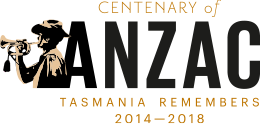Royal Australian Air Force

Mounted horsemen engaged in battle in World War One but aircraft and a new modern age of warfare was taking flight. Colonel Granville Ryrie (circa 1914) mounted on his horse Plain Bill, in front of a Bristol box kite. Ryrie took this horse overseas when he left Australia with the 2nd Light Horse Brigade 1914. Photographer: Laker & Co., 119 George Street, Camperdown, NSW. Australian War Memorial ID P01221.002
Aircraft a pivotal role in World War One
World War One marked a new era for military aviation and is where the story of the Australian Air Force starts. During the war, the Australian Imperial Force included four Australian Flying Corps (AFC) squadrons comprising 3,640 men. In total, 175 of those men lost their lives during the war.
The first Australian operation was in response to the request from the Indian government for assistance in Mesopotamia (now Iraq). This became known as the Mesopotamia Half-Flight, or the Australian Half-Flight. The campaign in Mesopotamia ended in the surrender and subsequent imprisonment of an Allied garrison, which included nine mechanics of the Mesopotamia Half-Flight.
The four squadrons of the AFC assisted British forces in World War One. No. 1 Squadron fought in the Middle East against German and Turkish forces, while numbers 2, 3 and 4 served on the Western Front.
It was during World War One that Launceston-born Hudson Fysh – the man who would later become the founder of Qantas Airways – began his career in aviation. Fysh served in Gallipoli as a member of the 3rd Light Horse Regiment and flew with the No. 1 Squadron AFC in Palestine. He was awarded the Distinguished Flying Cross for his efforts, which included taking down a number of enemy aircraft. Upon the end of the war, Fysh founded Qantas and flew as a commercial pilot. Later, in the Second World War, Qantas assisted with transporting troops and equipment and returning casualties. Fysh remained the Chairman of Qantas until 1966.
After the First World War the AFC was disbanded, but in 1920 the Australian Air Corps was established, later becoming the Royal Australian Air Force (RAAF) in 1921.
Role of Air Force in World War Two
The Second World War saw aviation become even more instrumental in warfare. At its peak in 1944, the RAAF had over 182 000 members and 6 200 aircrafts, making up a total of 61 squadrons. In 1945 it was the fourth largest Air Force in the world. During the Second World War, the RAAF took part in campaigns in Europe, North Africa and the Middle East; the North Atlantic, Indian and Pacific Oceans and the Mediterranean; India, Burma, Malaya, Singapore, Thailand, China, the Netherland East Indies, New Guinea, the Solomon Islands, the Philippines and Borneo. During the war, 9 870 members of the RAAF lost their lives.
It was during World War Two that what is now the site of Launceston Airport was used to train RAAF troops. The No. 7 Elementary Flying Training School was established in August 1940, and by 1944 had trained over 1 800 pilots for the war effort as part of the Empire Air Training Scheme.
Since World War Two, the RAAF has taken part in numerous wars and conflicts, including the Korean War, the Malayan Emergency, the Indonesian Confrontation, and the Vietnam, Iraq and Afghanistan Wars.
The RAAF today employs approximately 14 000 people, and has a further 4 000 Reserve members and 800 civilian public servants, and its role is largely a peacekeeping one.



